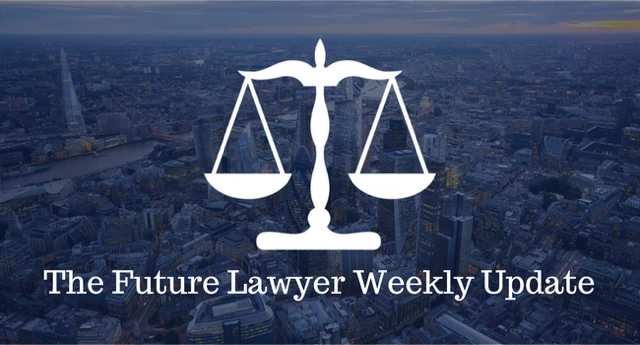
Rachel Reeves’ Budget Analysed: Impacts for Business and Consumers
November 14, 2024
The Future Lawyer Weekly Briefing – W/C 18th November 2024
November 17, 2024The judgment in HXA v Surrey County Council was delivered by the UK Supreme Court on the 19th of October 2023. This case concerned a special leave application made by Surrey County Council to the HL, where the Court of Appeal decision had restored the claims of the respondent, HXA.
Background:
This case includes two different appeals by the local authority Respondents. In each case, the Respondent argued that the Appellant owed them a duty of care so that they would not be harmed by the parents on the basis that the Respondent had taken responsibility for preventing the harm. In each case, the judge at first instance ordered that the claim be struck out, but the Court of Appeal reversed that order, and each claim was permitted to go to trial. In each case, the first instance judge struck out the claim, but the Court of Appeal reversed this and allowed each claim to proceed to trial.
HXA was born in March 1988. The Appellant, “SCC”, was engaged with HXA’s family since September 1993. A child protection conference (“CPC”) was held in July 1994, at which HXA and her three sisters were placed on the child protection register under the category “neglect”. In November 1994, (i) an allegation was made to SCC where it was claimed that HXA had been attacked by her mother; (ii) a SCC social worker consulted a solicitor with the intention of making an application for a care order; and (iii) SCC decided to conduct a detailed assessment, although this never materialised. The children were deregistered in January 1995.
Around July 1996, HXA’s mother formed a relationship with a male (“LA”), who moved into the house. All the children except HXA were re-registered in November 1996. In Spring 1999, HXA reported to a school dinner lady that LA came into the bathroom while she was in the bath. The report was passed to the headteacher, but no further action was taken. In January 2000, SCC received a referral from HXA’s school: a friend of HXA had alleged that LA had touched HXA intimately. At a January 2000 CPC: (i) SCC decided not to investigate the report further due to concern about LA’s reaction and an incorrect belief there were no previous concerns, and (ii) SCC resolved to conduct “keeping safe” work with HXA and her sisters, but that work was not carried out. In January 2009, LA was convicted of raping HXA, and HXA’s mother was convicted of indecently assaulting her.
YXA was born in November 2001 and resided in the Appellant (“WCC”) area from August 2007. YXA has epilepsy, learning difficulties, and autism spectrum disorder. The assessments were made during the months of November and December in the year 2007 by WCC. The needs and concerns that YXA has about his parents being able to meet those needs were established. The first doctor was a pediatrician who noted that YXA was being given the medication by the parents and suggested that the child should be taken to a place where he is protected. Since April 2008, WCC originally provided YXA with one night stay per two weeks and one weekend per two months with the parents’ permission. There were still doubts as to whether the parents would be able to provide for YXA adequately. YXA was referred to the care of the local authority in December 2009 with parental consent. It was further alleged that care proceedings were initiated with the final care order being made in March 2011.
Proceedings:
The legal proceedings examined centered around whether the statutory obligations of local authorities in child protection could establish a private duty of care, making them liable in negligence for failing to prevent third-party abuse. Initially, both HXA and YXA sued Surrey County Council and Wolverhampton City Council arguing that the latter had neglected to protect them despite knowing the risks that the abused had within their family homes. These claims were dismissed by the High Court, since the councils were not under any statutory obligation that would create a common law duty of care where they became involved. The claimants appealed, however, the lower court decision was affirmed with the Court of Appeal relying on previously cited legal maxims that mere statutory duties owed by public authorities to the public do not equate to private law duties of care where there was no assumption of responsibility. The case eventually proceeded to the Supreme Court, but its decision was consistent with that of the lower instance courts by rejecting the liability of the councils based on their statutory responsibilities alone.
Judgment:
The Supreme Court upheld the dismissals, stating that local authorities are not automatically responsible for negligence when carrying out their statutory child protection duties. The Supreme Court clarified that actions like investigating abuse or providing limited support services under the Children Act 1989 do not establish a common law duty of care. It emphasized that a clear “assumption of responsibility” must exist for liability to be established, indicating that public authorities should not face excessive liability simply because they are aware of potential abuse risks. Referencing the case of N v Poole Borough Council, the Supreme Court highlighted that negligence liability requires more than just statutory involvement or awareness of risks; there must be a clear indication that the authority has assumed a protective role similar to that which a private individual would have under common law. As a result, the Court determined that, in the absence of this assumption of responsibility, the councils had no obligation to prevent the alleged abuse by third parties, effectively establishing a high standard for liability in such situations.
The primary legal framework in this case was the Children Act 1989, which mandates local authorities to investigate and take action where children are at risk of harm. However, the act does not explicitly establish a private law duty to prevent harm inflicted by third parties. This case also drew heavily on principles from N v Poole, where the Supreme Court clarified that statutory obligations do not inherently create enforceable rights in private law. The decision in N v Poole established that an authority’s statutory role in child protection does not equate to a duty of care under common law unless it has explicitly assumed responsibility for the child’s welfare. In HXA, the Supreme Court upheld this principle, affirming that statutory duties are separate from private law obligations. Public authority liability is therefore limited unless the authority has undertaken a custodial role, such as issuing a care order, thereby creating an assumption of responsibility for the child’s safety.
Commentary:
This is considered as a precedent for determining the scope of public authority’s negligence liability. Another aspect of the case is the challenges of placing new common law duties on public entities occasioned by the fact that they are already guided by statutes. In other words, the decision shields local authorities from being potentially held liable for negligence in activities beyond legislative powers.
Some argue that this decision leaves vulnerable individuals without recourse when public bodies fail in their child protection duties. They contend that the decision prioritizes the legal protection of councils over the welfare of at-risk children, particularly those who, like HXA, fall through the cracks of statutory protection. However, others advocate for the ruling as it avoids a raft of legal liability, arguing that the requirements from local authorities are adequate and clear under the existing child protection laws. They claim that extending the scope of common law duties might lead to the emergence of concerns that are simply too great for public authorities to handle and might also lead to a degradation of their efficiency in the satisfactory performance of their statutory roles.
Written by Faryal Fatima





